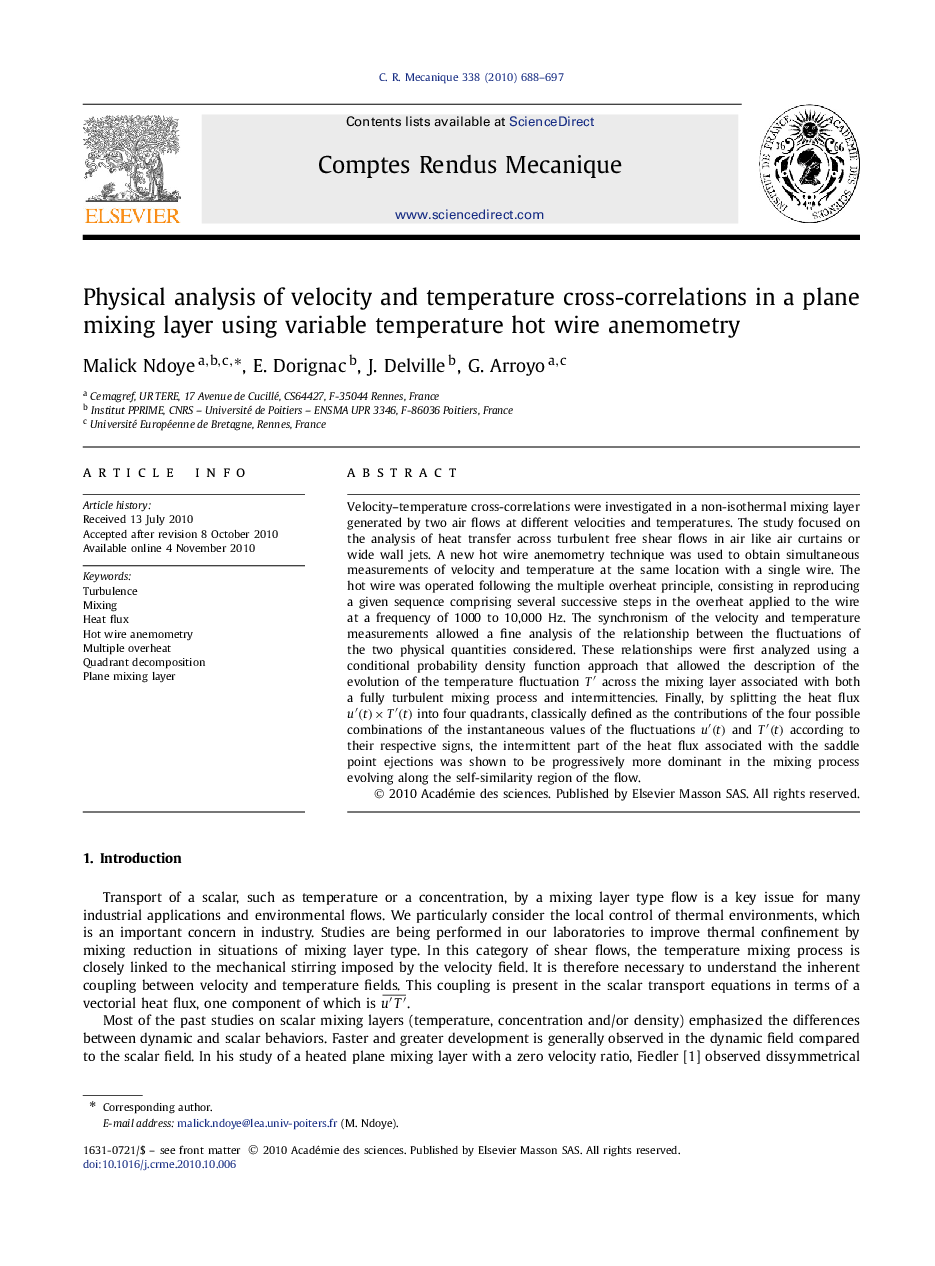| Article ID | Journal | Published Year | Pages | File Type |
|---|---|---|---|---|
| 823843 | Comptes Rendus Mécanique | 2010 | 10 Pages |
Velocity–temperature cross-correlations were investigated in a non-isothermal mixing layer generated by two air flows at different velocities and temperatures. The study focused on the analysis of heat transfer across turbulent free shear flows in air like air curtains or wide wall jets. A new hot wire anemometry technique was used to obtain simultaneous measurements of velocity and temperature at the same location with a single wire. The hot wire was operated following the multiple overheat principle, consisting in reproducing a given sequence comprising several successive steps in the overheat applied to the wire at a frequency of 1000 to 10,000 Hz. The synchronism of the velocity and temperature measurements allowed a fine analysis of the relationship between the fluctuations of the two physical quantities considered. These relationships were first analyzed using a conditional probability density function approach that allowed the description of the evolution of the temperature fluctuation T′ across the mixing layer associated with both a fully turbulent mixing process and intermittencies. Finally, by splitting the heat flux u′(t)×T′(t) into four quadrants, classically defined as the contributions of the four possible combinations of the instantaneous values of the fluctuations u′(t) and T′(t) according to their respective signs, the intermittent part of the heat flux associated with the saddle point ejections was shown to be progressively more dominant in the mixing process evolving along the self-similarity region of the flow.
